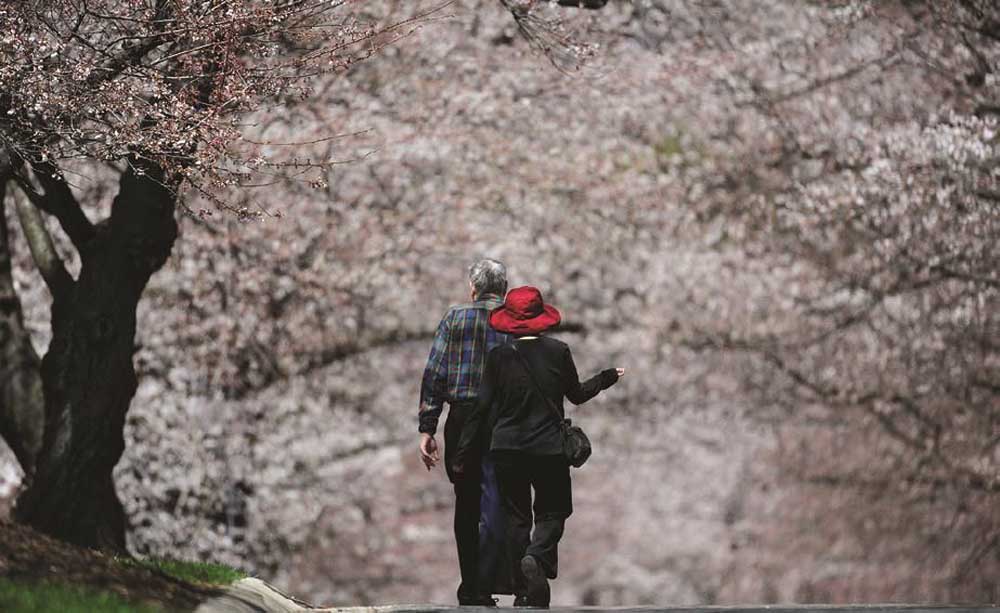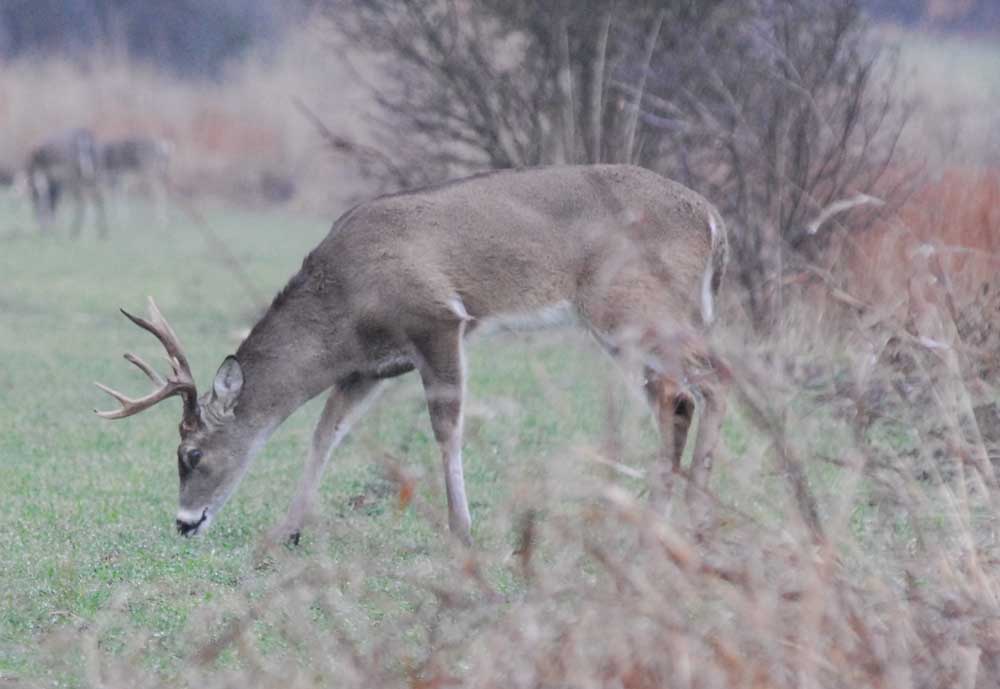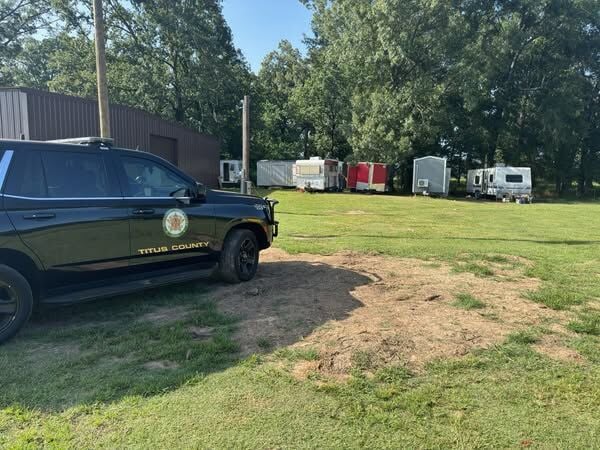6 spots where you can enjoy cherry blossoms in D.C. without crowds
Published 2:45 am Sunday, April 7, 2019

- Cherry trees line Highland Drive in the Kenwood neighborhood of Bethesda, Md. The area provides an alternative to the Tidal Basin in Washington, D.C., for viewing cherry blossoms.
There’s a reason the Tidal Basin is the epicenter of Washington, D.C.’s cherry blossom madness: The nearly 4,000 trees there, mostly of the Yoshino variety, create a shimmering, pink-cloud effect that’s quite nice — if you don’t mind the 999 people angling to get close to each one. Here are six spots around the region that deliver a quieter, less crowded cherry blossom experience.
DUMBARTON OAKS
Cherry Hill is, in a word, magical: a slope that’s tucked away in a remote corner of this 10-acre Georgetown historic estate and that, in bloom, is reminiscent of a pastel forest. Unlike at many botanical gardens, there are no identification labels and no signage about the history of the trees, which helps create a relaxed environment.
“It’s a serene, parklike atmosphere where you can intimately enjoy the trees,” says Jonathan Kavalier, Dumbarton’s director of garden and grounds. Visitors often bring blankets and spend hours reclining among the various species of cherry trees, both on Cherry Hill and elsewhere on the grounds. Before heading out, explore Dumbarton Oaks Museum, where a new exhibition highlights ancient Chinese art from Mildred Barnes Bliss’s collection. Postvisit, duck into the nearby Bistrot Lepic and Wine Bar (1736 Wisconsin Ave. NW). The French menu includes snails baked in garlic butter and mushroom risotto with fried Brussels sprouts.
Dumbarton Oaks, 1703 32nd St. NW., Washington, D.C. $5-$10.
NATIONAL ARBORETUM
This federally run garden/research institution has the most diverse selection of cherry trees in the region. There are more than 70 varieties, and collection standouts include Awanui, a flowering cherry from New Zealand that’s rare in the United States, and Kojo-no-mai, known for its twisty branches. Some species were created by the scientists who work at the arboretum. In one research plot, “there’s every shade of pink you can think of, and some you’ve never thought of,” says Scott Aker, head of horticulture and education. “Every spring, it amazes me.”
The arboretum tends to have a longer blossom season than other local spots, with more early and late bloomers. Pick up instructions for a self-guided tour at the visitors center, and then wander the 446-acre property. Afterward, head to Supreme Core Cider’s taproom (2400 T St. NE), next to the residential entrance to the arboretum, for a flight or pint — perhaps the “cherry bloom” cider, which returned to the menu this month, blending sweet and tart cherries with Champagne yeast.
National Arboretum, 3501 New York Ave. NE, Washington, D.C. Free.
STANTON PARK
This grassy urban oasis is tucked among the historic rowhouses on Capitol Hill about half a mile from the Capitol. It’s named for President Abraham Lincoln’s secretary of war, Edwin Stanton, although the statue in the center honors Revolutionary War hero Gen. Nathanael Greene. The perimeter of the park is lined with cherry trees, and most visitors won’t have trouble snagging an unoccupied bench. Since it’s a 10-minute walk from Union Station, Stanton Park is a good choice for those passing through town who want to steal a quick peek at the blossoms.
While you’re in the neighborhood, pop into Ambar (523 Eighth St. SE), which is one of the National Cherry Blossom Festival’s Cherry Picks restaurants — eateries that are offering special spring cocktails, entrees and desserts through April 8. Celebrate the season with a cherry blossom doughnut at District Doughnut (749 Eighth St. SE): It’s a gooey combination of vanilla bean dough, cream cheese glaze, cherry pie filling, pie crust crumble and cream cheese drizzle.
Stanton Park, Fourth and Sixth streets NE, Wasshington, D.C. Free.
KENWOOD NEIGHBORHOOD
More than 1,200 cherry trees — the largest concentration in any neighborhood in the area — line Kennedy Drive, Dorset Avenue, Kenwood Avenue and other streets in this Bethesda, Maryland, enclave. Branches heavy with blossoms stretch from one side of the road to the other, creating a fairy-tale feel. Parking in the residential neighborhood can be a challenge, so consider taking Metro’s Red Line to the Bethesda station and then walking the mile and a half to Kenwood. Or hop onto the Capital Crescent Trail in Georgetown and bike to the neighborhood: The six-mile route delivers riders directly to Dorset Avenue.
While ambling through Kenwood, stop by the snowcone and lemonade stands operated by young residents, and then celebrate the blossoms’ heritage at Yirasai Sushi (5110 Ridgefield Road).
Kenwood, between Little Falls Parkway and River Road, Bethesda, Maryland. Free.
MEADOWLARK BOTANICAL GARDENS
This 95-acre park in Vienna, Virginia, lights up with about 200 cherry trees of assorted varieties, including the Yoshino blossoms that the Tidal Basin is known for. Many of them surround Lake Carolyn, where visitors are likely to spot koi fish and snapping turtles. There’s also a cluster near Meadowlark’s Korean Bell Garden.
Peak bloom typically occurs a day or two after it does downtown, says park manager Keith Tomlinson: “What I tell people is, if you’re a cherry tree enthusiast, go downtown, and then a couple days later, come here.”
Mosey about the grounds, then head to Clarity (442 Maple Ave. E), which Washington Post food critic Tom Sietsema has called “a one-of-a-kind dining experience in Northern Virginia.” The menu at chef-owner Jon Krinn’s modern American restaurant changes daily.
Meadowlark Botanical Gardens, 9750 Meadowlark Gardens Court, Vienna, Virginia. $3-$6.
RIVER FARM
Don’t let the total of only three cherry trees dissuade you from this bucolic estate located on the banks of the Potomac River in Alexandria, Virginia. What River Farm lacks in quantity, it makes up for in atmosphere and serenity. The property, once owned by George Washington, is the headquarters of the American Horticultural Society. Commune with the trees, and then explore the children’s garden, the orchard and the Osage orange tree, which is 200 years old and recognized as one of the largest in the country.
Peak bloom is expected to coincide with the explosion of 14,000 bulbs — daffodils, tulips and other radiant flowers planted across the property, says Dan Scott, AHS’s associate director for horticulture and River Farm. Continue the tour at nearby Mount Vernon (3200 Mount Vernon Highway, Mount Vernon).
River Farm, 7931 E. Boulevard Dr., Alexandria, Virginia. Free.






